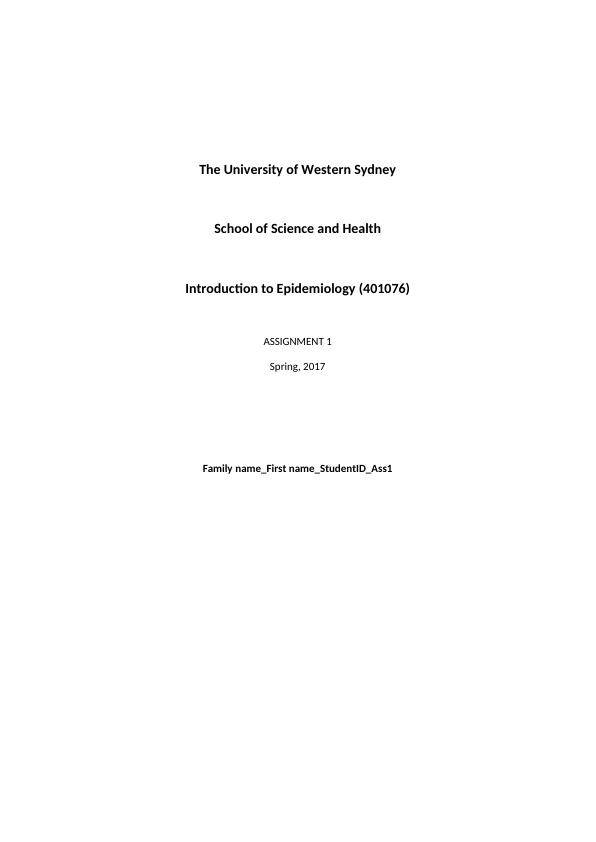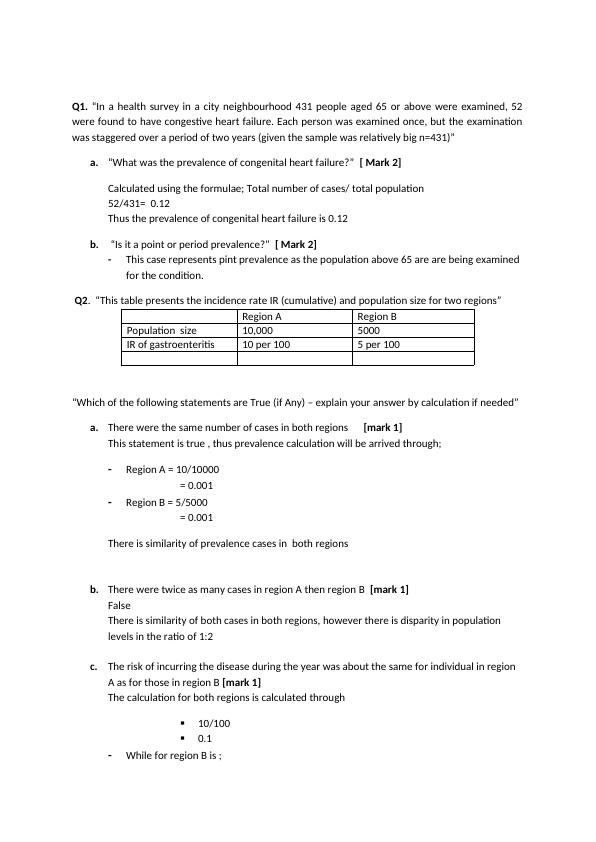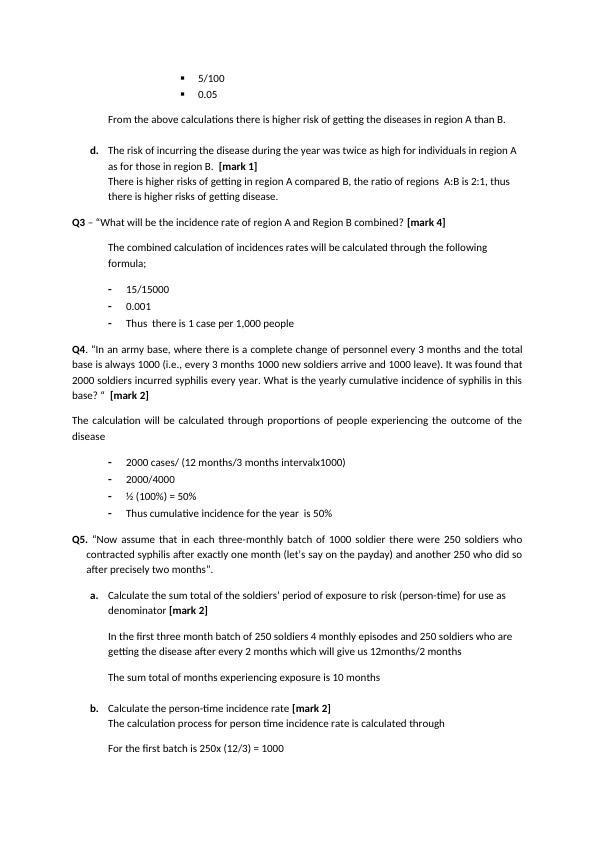Ask a question from expert
401076 - Introduction To Epidemiology Assignment
7 Pages1944 Words261 Views
University of Western Sydney
Introduction to Epidemiology (401076)
Added on 2020-02-24
About This Document
401076 - Introduction To Epidemiology Assignment, This assignment is based on the learning objectives and concepts in Topic 1. There are a total of 46marks and this assignment will contribute 20% towards the total assessment for this subject.
401076 - Introduction To Epidemiology Assignment
University of Western Sydney
Introduction to Epidemiology (401076)
Added on 2020-02-24
BookmarkShareRelated Documents
End of preview
Want to access all the pages? Upload your documents or become a member.
Study on Epidemiology Research-NUR 408
|7
|1995
|285
Assignment on Epidemiology
|9
|2208
|133
General Population And Assessed For HIV Virus
|9
|1572
|11
Numerical Problem Solving – scenario based calculations
|8
|1494
|24


